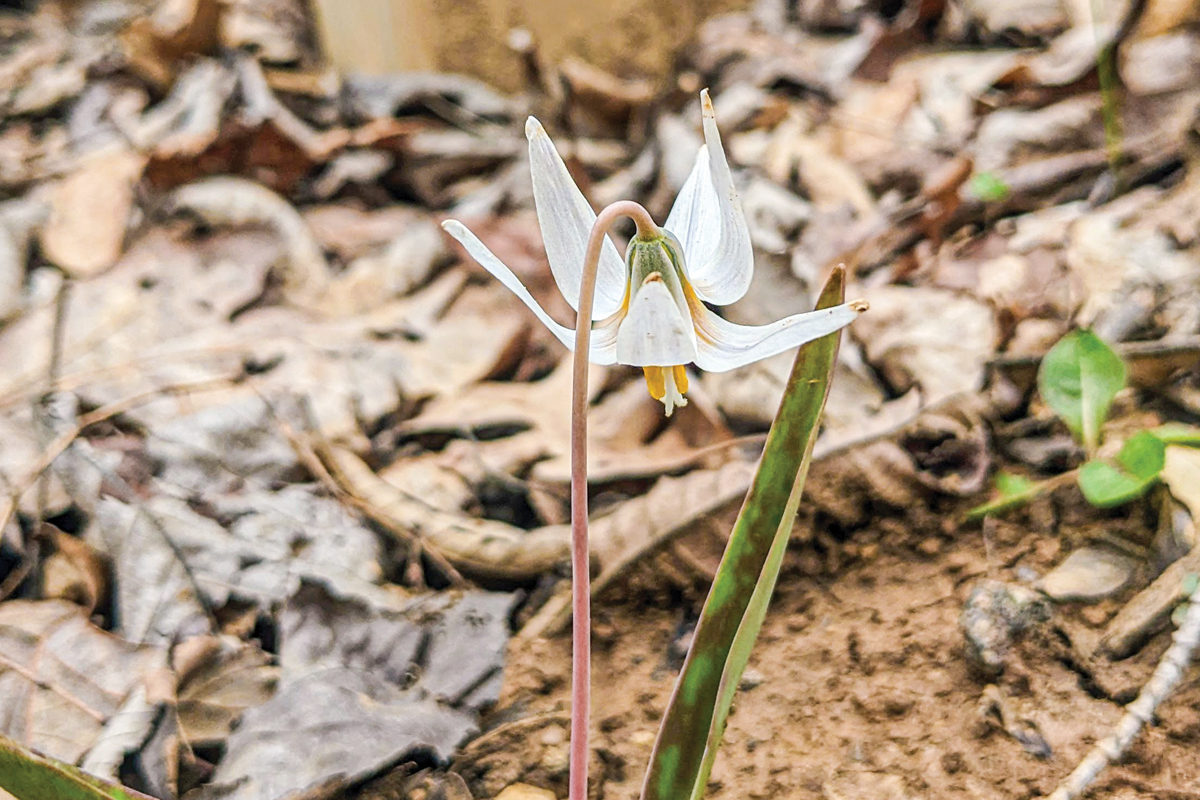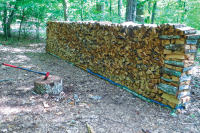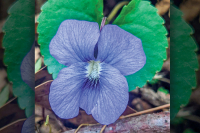Notes from a plant nerd: Spring, Sprang, Sprung, Sproing! What is Springtime?
 A beautiful white fawn-lily in full bloom. Adam Bigelow photo
A beautiful white fawn-lily in full bloom. Adam Bigelow photo
Spring has fully sprung across Southern Appalachia, as we are awakened daily to birdsong and the bustling morning activity of bees and butterflies.
Flowers are blooming in a progression like a great parade along the trail, lacking only a broadcaster’s color commentary: “And here comes the trilliums, all decked out in their finest shades of red, white and pink. And oh, don’t the larkspurs look splendid?”
But, what is Spring? That word certainly means a whole lot of different things to different people, anything from a metal coil to a source of water to jumping over something. Of course, spring is the season of growth and renewal. One thing that most all definitions of spring contain are a connotation of resilience.
And even within the definition most fitting for an article about plants, a time or season of growing, there is much confusion about when spring actually begins, leading me to another question, when is spring? is it a date on a calendar? Is it the time of year when everything is warm? I talked about that idea a bit ago when reminding folks that warmth all the time is a description of summer, and that spring contains all weather. And it does, but yet as springtime progresses, it tends to develop a whole string of lovely days.
When those warm periods and the corresponding blooms arrive depends on a whole lot of interrelated factors, primarily where you live. Northern hemisphere or southern? Latitude? Spring arrives much later for those who live in northern states than it does for those in the south. And around here in Southern Appalachia, when springtime arrives at your door depends on elevation, as we can yearly watch the progression of leaves emerging on trees that starts in the valleys in early April and works its way up to the mountaintops, filling in the canopy by the end of May.
I love to watch this progression in the emergence and bloom time of trout-lilies (Erythronium spp.) which I can go see in early February at lower elevations just off the mountain in Upstate South Carolina or North Georgia. They typically start blooming en masse around Cullowhee by the end of February and early March. And I have seen this plant’s remaining leaves as late as the first week of June at the highest elevations of the Smokies.
Related Items
The thing about trout-lily is that they are a true spring ephemeral, and each plant is only above ground for a few short weeks in any given area, yet they can be seen blooming from February through May, depending on where you live. So, if you miss the trout-lily bloom on the trail next to your house, you can travel up higher in elevation to see them in bloom.
Or you could drive northerly in latitude to catch them. It is similar as there is a relationship between elevation and latitude that makes for some interesting travel. Going from the valleys and town up to the high elevations along the Blue Ridge Parkway and Great Smoky Mountains is similar in temperature and what is blooming as if you were driving north for hundreds of miles. When you go high enough into the Balsams where the evergreen trees grow, it is as if you are driving and walking across Canada or Maine.
If you do drive north to follow springtime’s blooms and you’re lucky enough in your timing, you might even catch a white fawn-lily (Erythronium albidum), which look very similar to the trout-lillies that grow around us (Erythronium umbilicatum and E. Americanum) except that instead of yellow flowers these bloom a beautiful white with hints of lavender in the petals.
No matter where you are or how you define springtime, it is a time of celebration and exuberance. And I encourage you to celebrate it exuberantly by getting out and looking at some wildflowers. I’ll join you.
(Adam Bigelow lives in Cullowhee. He leads weekly wildflower walks most Fridays and offers consultations and private group tours through Bigelow’s Botanical Excursions. This email address is being protected from spambots. You need JavaScript enabled to view it.)













